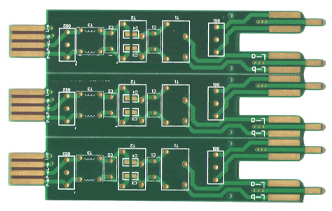What is the quality standard of PCBA processing? What aspects should be inspected when accepting PCBA processed products? The acceptance criteria for PCBA processed products are shared below:
1. Inspection environment:
1. Inspection environment: temperature: 25±3 degree Celsius, humidity: 40-70%RH
2. Appearance determination is made within 1m from a 40W fluorescent lamp (or equivalent light source), and the inspected product is 30cm away from the inspector.
2. Sampling level:
QA sampling standard: implement GB/T2828.1-2003 level II inspection one-time sampling plan
AQL value: CR:0 MAJ: 0.25 MIN: 0.65

3. Inspection equipment:
BOM list, magnifying glass, feeler gauge, patch location map
4. Acceptance criteria:
1. Reverse:
The polarity point (white silkscreen) on the component is in the same direction as the diode silkscreen on the PCB board (acceptable)
The polarity point (white silkscreen) on the component is inconsistent with the diode silkscreen on the PCB board. (Rejected)
2. Too much tin:
The maximum height of the solder joint (E) can exceed the PAD or extend to the top of the metal plating of the end cap of the solderable end, but cannot touch the component body (acceptable)
The solder has touched the top of the component body. (Rejected)
3. Reverse:
Where there are exposed and stored electrical materials, chip components have the material surface and the printed surface mounted in the opposite direction, and only one component ≤ 0402 per Pcs board is allowed to be reversed for chip components. (Acceptance)
If there are exposed and stored electrical materials, the chip components will be mounted in the same direction as the printed surface. Two or more components ≤ 0402 per Pcs board for Chip components will be highlighted. (Rejected)
4. Air welding:
The solder joints between the component pins and the PAD are wet and full, and the component pins are not warped (acceptable)
The component pin arrangement is not coplanar, which prevents acceptable soldering. (Rejected)
5. Cold welding:
The solder paste is fully extended during the reflow process, and the tin on the solder joints is completely wet and the surface is shiny. (Acceptance)
The solder paste on the solder ball is not completely reflowed, the appearance of the tin is dark and irregular, and the solder paste has tin powder that is not completely melted. (Rejected)
6. Few pieces:
The BOM list requires that a certain placement number requires placement of components but not placement of components (rejection)
The BOM list requires that a certain placement number does not require placement of components but has already placed components, and redundant parts appear in places that should not be present. (Rejected)
7. Damaged parts
Any edge peeling is less than 25% of the component width (W) or component thickness (T), and the maximum metal plating loss on the top of the end is 50% (each end) (acceptable)
Any cracks or nicks that expose the click, cracks, nicks or any damage on the glass element body, any nicks in the resistance material, any cracks or indentations. (Rejected)
8. Foaming and stratification:
The area of blistering and delamination does not exceed 25% of the spacing between plated through holes or internal conductors. (Acceptance)
The area of blistering and delamination exceeds 25% of the spacing between plated through holes or internal conductors, and the area of blistering and delamination reduces the conductive pattern spacing to violate the minimum electrical clearance. (Reject)
Only by strictly implementing the acceptance procedures can the quality of PCBA processed products be guaranteed. Only by paying more attention to quality can we survive in an increasingly competitive market.